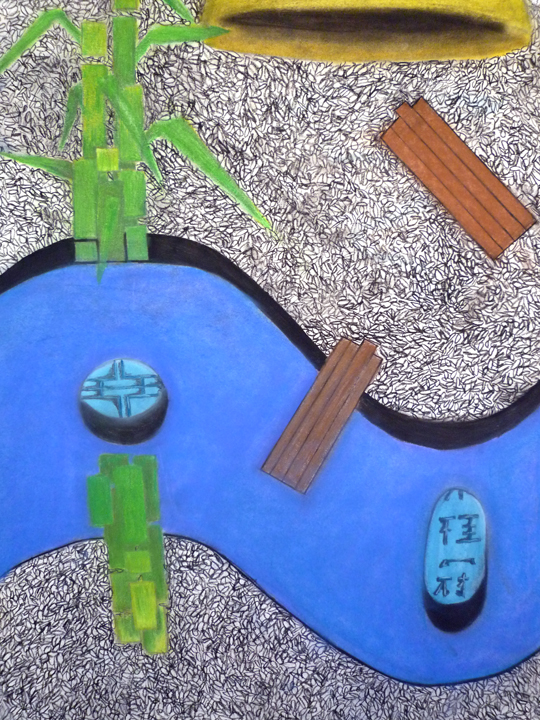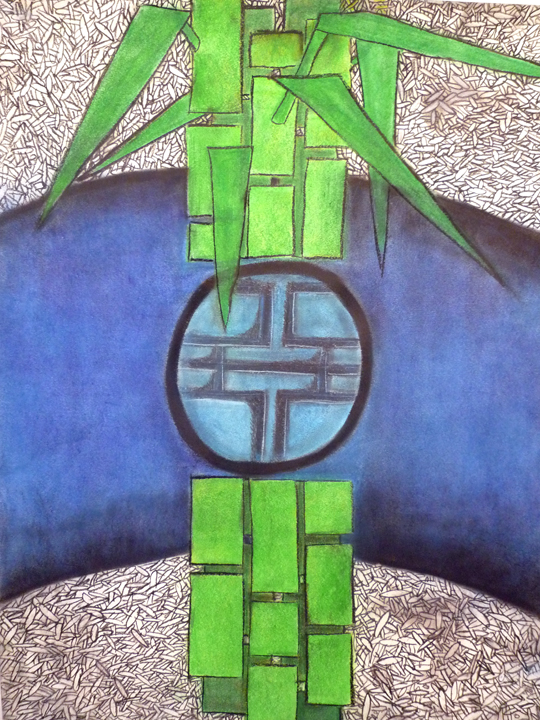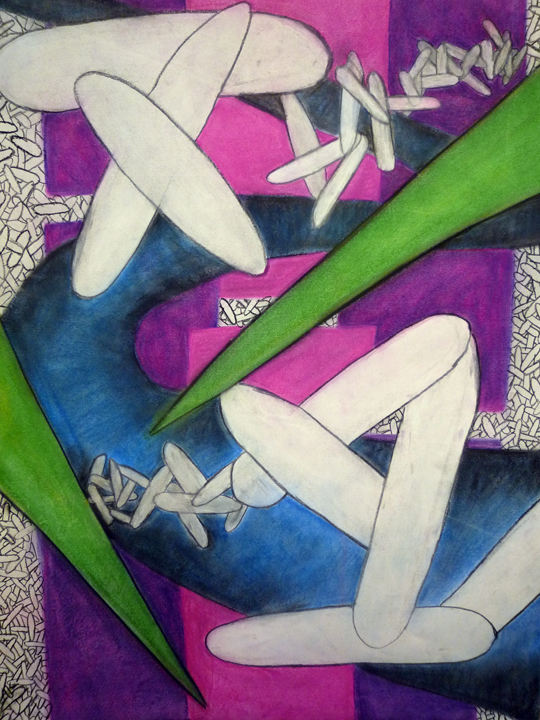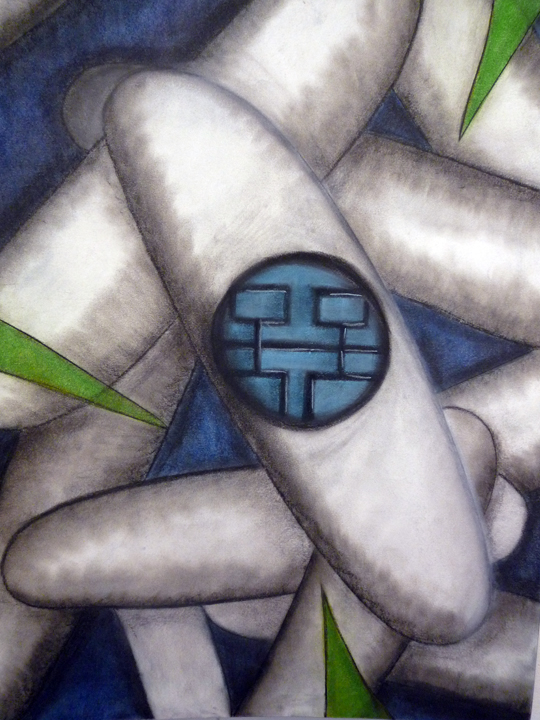Professors' Pet Projects: Super Bowl Ads, Game Shows, and More
by Ramona DiFrancesco
If you’re thinking about taking a class here at 4Cs but don’t know much about it, here are some professor’s descriptions of their favorite projects they assign. It can give you an idea of what you can expect from their class, as well as how they teach and appreciate academia.
Professor Robert Pasquinucci, Arts and Communication:
Q: What's your favorite project that you assign to students? This could be a project you assign every year, or a project you just tried once and enjoyed?
A: I assign them to look at Super Bowl ads and see how those marketing messages are amplified on social media channels - this is a fun way to incorporate the news of the day into class.
Q: What did you like about this project? For example, did you enjoy grading them and learning something about your students? Or did you like seeing the different ways students handled the project?
A: I like this because it takes the theoretical and puts it into practice. I often learn things that I didn't see when watching the game / social feeds. Students see some very interesting things!
Q: Where did the idea for this project come from? Is this an idea you came up with? How has it improved your class curriculum?
A: I think I came up with it myself but have used variations on it in the past. It puts a very applied spin on the content I teach.
Q: What have students told you they like about this project? What did they say they learned from it? How did it help improve or impair (if they half-assed it) their grade in the class?
A: I think students like the opportunity to take something they are doing anyway and applying it to their studies. It generally improved their grades!
Q: And finally, what makes you come back to this project and keep assigning it every year? Or why did you choose to try it once and not again?
A: This project is a proven winner and helps students understand that social media is more than just clever posts. I try to come up with something similar when I teach in the Fall term - like looking at which brand "owned" Halloween on social media.
Professor David Breski, Adjunct Computer Science & Engineering Science and Applied Technology:
Q: What's your favorite project that you assign to students? This could be a project you assign every year, or a project you just tried once and enjoyed
A: In Java programming CSC110 we build a virtual ATM machine.
Q: What did you like about this project? For example, did you enjoy grading them and learning something about your students? Or did you like seeing the different ways students handled the project?
A: I like this project because it uses nearly all the concepts we cover in the class. Program design, UI design, object design and definition and object persistence. It is always interesting to see how students envision something they use frequently in the real world in a virtual environment.
Q: Where did the idea for this project come from? Is this an idea you came up with? How has it improved your class curriculum?
A: It came to when I was getting money out of the ATM. A number of years ago I worked with a group on developing object-oriented programming constructs. One of the members of the group was from Bank of America. They were working on the software inside the ATM. One of methods they had was called ‘getCash’. I always thought that was an appropriate and fun name for withdrawing money. Not many students come up with method! I think it is fun for students to do and gives everyone a chance to demonstrate a skill. Whether that is designing a slick UI, creating elegant code or just overall design skills.
Q: What have students told you they like about this project? What did they say they learned from it? How did it help improve or impair (if they half-assed it) their grade in the class?
A: Some have said it was fun, a few others thought it was hard – especially the UI part. But in general, most students are pleased when they get it to work and some take advantage of adding their own bells and whistles - like having images of cash come out. This gives me a much better sense of their understanding of the concepts we worked on than a test or quiz does. Unless they do not turn it in, it can only help their grade.
Q: And finally, what makes you come back to this project and keep assigning it every year? Or why did you choose to try it once and not again?
A: I generally use the same conceptual idea each year, so one year it might be an ATM and the next it might be a virtual vending machine – that one really brings out the creative folks.
Professor Kathleen Bent, Accounting and Business Technology:
Q: What's your favorite project that you assign to students? This could be a project you assign every year, or a project you just tried once and enjoyed.
A: My favorite project is one that I assign in my full-semester Excel course. Students develop an Excel solution for a real-life problem. For those with jobs, it can be something they can provide for their workplace. Or, it can be a workbook that can be used to assist with a volunteer organization in which students are involved or for a personal business endeavor. Some semesters I solicit projects from others in the College which adds another dimension—meeting a client’s needs.
Q: What did you like about this project? For example, did you enjoy grading them and learning something about your students? Or did you like seeing the different ways students handled the project?
A: This project provides a way for students to incorporate what they’ve learned not only in the Excel course, but also from the other business courses they’ve completed. It strengthens their problem-solving skills because they begin with nothing—a blank workbook and an idea. The hardest part is the planning phase because there are no directions for setting it up. This project also provides a way for students to see they can apply what they’ve learned in the classroom to their work or personal lives.
Q: Where did the idea for this project come from? Is this an idea you came up with? How has it improved your class curriculum?
A: I previously used comprehensive problems from textbooks for a final project grade, but then discovered the students never developed anything from scratch until they were required to do so on the job. It is always more difficult to start with nothing – figuring out how to set up the data you have in an organized format to allow flexibility and provide the information needed. Development of the user interface—what users see and how they interact with the workbook—is difficult for students. The most common error is not being able to set up the workbook solution for longevity. This project demands critical thinking, creativity and stretches a student’s ability to troubleshoot—skills developed through experience and not from lectures, demonstration, or reading a textbook.
Q: What have students told you they like about this project? What did they say they learned from it? How did it help improve or impair (if they half-assed it) their grade in the class?
A: Initially students struggle coming up with a project. Then, because they are personally invested, they work very hard to come up with the solution. Grading is always tricky – the grade is not based on using every Excel feature covered in the course, but in using the features appropriately. I typically provide feedback using comments and providing suggestions for improving the Excel solution rather than a “point-system” that provides a “grade.” The project is used to help improve the overall course grade, especially if a student doesn’t test well in a traditional setting.
Q: And finally, what makes you come back to this project and keep assigning it every year? Or why did you choose to try it once and not again?
A: One student years ago, struggled during the beginning weeks of the course and wasn’t thrilled about the project. In the end, she developed a workbook to use on the job and when she presented it to her manager received a bonus and a salary increase! She was so excited about doing more with Excel after that. Seeing the learning come alive in this manner is why I continue to assign a project which encourages the personal connection rather than a textbook case study. Just when I’m ready to put this type of project aside because it does create stress for students and the project take forever to grade, a former student will mention how they appreciated learning Excel and the skills are useful on the job. That makes my day!
Professor Bill Berry, Language and Literature:
Q: What's your favorite project that you assign to students? This could be a project you assign every year, or a project you just tried once and enjoyed.
A: That’s a hard question. I enjoy much of what I do. I think my favorite thing is the end of semester group presentations where students design game shows to showcase their research papers. The students get to take over the class and have fun facilitating for their peers. It’s often a good time and we get to see what each person is working on for their final essays.
Q: What did you like about this project? For example, did you enjoy grading them and learning something about your students? Or did you like seeing the different ways students handled the project?
A: I like that it’s student focused—students design it and do it. It’s “required” fun for everyone involved (groups must include class participation in their gameshow).
Q: Where did the idea for this project come from? Is this an idea you came up with? How has it improved your class curriculum?
A: I’m not sure—I’ve done this for years as a way of involving students in the class and giving them a taste of what it’s like to be “on the other side of the desk” in a fun, light way. It’s created a lot of valuable space for students to build and engage and enjoy community, which improves curriculum, I think.
Q: What have students told you they like about this project? What did they say they learned from it? How did it help improve or impair (if they half-assed it) their grade in the class?
A: At first no one likes the idea of a group presentation; however, once they’re off and running and after all is said and done, everyone admits to having a really good time with them and enjoying themselves. That’s nice.
Q: And finally, what makes you come back to this project and keep assigning it every year? Or why did you choose to try it once and not again?
A: It takes a lot of stress off of me at the end of the semester and lets the students take control of their own classroom environment. That’s why I keep doing it. It also helps to provide a space for autonomy, which is important.
Professor Scott Anderson, Arts and Communication:
Q: What's your favorite project that you assign to students? This could be a project you assign every year, or a project you just tried once and enjoyed.
A: Drawing I class. Final Assignment 'Drawing in Series'
Q: What did you like about this project? For example, did you enjoy grading them and learning something about your students? Or did you like seeing the different ways students handled the project?
A: The drawing in series project is the capstone assignment that brings all the student's skills, knowledge and practice in the course together. This assignment transfers responsibility to the student for deciding what subject or theme they are interested in exploring visually. The assignment creates a challenge for the student to work independently and generate their ideas towards finding intention in their work through creative expression. It's the closest they get to working like an artist works.
Q: Where did the idea for this project come from? Is this an idea you came up with? How has it improved your class curriculum?
A: I have a clear philosophy that informs my teaching practice. It centers on expanding the student's visual vocabulary. Visual language is not dissimilar to other vocabularies. For example, the language of mathematics centers around numerals and symbols that carry meaning when used in specific combination to problem solve. The English language uses 26 letters. When placed in a particular sequence, governed by grammatical rules, one has the ability to create words, sentences and paragraphs. In fact, all disciplines can be broken down into specific vocabularies dependent on the specific challenges, problems or ideas to be worked on and communicated. It's how our civilization has evolved. Through our ever-expanding use of vocabulary across disciplines. Visual language is the language of all visual disciplines regardless of medium. The drawing in series assignment helps the student create an inner dialogue, whereby the drawings begin to relate to each other and the development of ideas through composition are visually expressed and intention realized.
Q: What have students told you they like about this project? What did they say they learned from it? How did it help improve or impair (if they half-assed it) their grade in the class?
A: Students are able to evaluate their abilities and progress through this assignment. They are in a more confident position to exercise a self-evaluation with respect to the depth of their investigation and the development of their ideas. The effort the student has put into the project often determines the quality of the outcome, so the student is in a better place with respect to what they have discovered about their work and themselves through their work. Students often express how surprised they were about what they were able to achieve, how challenging the project was and how hard they had to work.
Q: And finally, what makes you come back to this project and keep assigning it every year? Or why did you choose to try it once and not again?
A: Depending on your major, projects can be a big part of your grade, so it’s always good to know what you’re getting yourself into what you want to take a course. But, as you can see, projects can also be a fun and interactive part of your education.

Kathleen Bent (Christine Pauk)

Robert Pasquinucci (Houston Raef)

Bill Berry (Bill Berry)

David Breski (David Breski)

"Drawing in Series" (Scott Anderson)






Categories: Featured, Around Campus